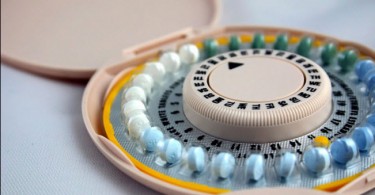
Sponsored Links
Intrauterine devices (IUDs) are the most effective form of reversible contraception available. They are inserted one time in the office and have a typical failure rate of .8% per year. Compare this to the more popular birth control pill which requires daily dosing and has up to 9% failure rate.
But, as I discuss contraceptive options with my patients, when I get to IUDs, I often begin to see their noses begin to crinkle in disdain before I can even finish my talk.
“No, I don’t want an IUD,” they will interrupt. “My sister’s roommate’s cousin got one stuck in her uterus. And what’s with all the lawyer commercials? They seem awfully dangerous to me.”
I carefully review the risks and benefits of each contraceptive option with my patients, but often it seems that their judgment is clouded by preconceived biases based on outdated information.
Among the most common IUD myths that I hear:
“IUDs cause abortion”
In a natural conception, the sperm fertilizes the egg in the fallopian tube, then the embryo travels back through the fallopian tube to implant in the uterus. We do know for certain that IUDs don’t disrupt an implanted pregnancy, therefore do not cause abortions.
The 3 IUDs that are available in the US appear to work by blocking the sperm and egg from meeting (preventing conception). The Sklya and Mirena thicken the cervical mucus, so the sperm can’t swim through it to get to the egg. The Paraguard is made of copper which acts as a spermicide, killing the sperm in the uterus before it can reach the tube. While we have yet to invent a tiny uterus camera that can confirm with 100% certainty that this is how they work, experts agree that this is the most likely mechanism of action based on laboratory studies and the extremely low tubal pregnancy rate of IUDs.
“IUDs are dangerous”
IUDs have risks and complications like all medications and devices. But the overall complication rate is low and the satisfaction rate is high. IUD use in the US has risen from 2% to 7% of women in the last 10 years (we are still way behind Europe where 17% of women choose it for their contraception). While the rate of complication is the same, the number of complications has increased due to more women using the devices. Anywhere there are complications of any kind, there are malpractice attorneys, commercials and pop up ads.
Advertisements
There have been no recent FDA warnings or any new data suggesting that IUDs are defective. In fact, the opposite is true. Several new studies have shown modern IUDs to be safer than previously thought.
The most significant risk of IUD is perforation which is where the IUD pokes through the uterus. The risk of that happening is 1/1000 women. If the IUD is displaced, it often does require surgical removal, but rarely causes long term complications.
“IUDs are extremely painful”
The uterus is intended to be an “exit only” organ so having a piece of plastic pushed into it is not the most fun procedure on the planet. The majority of women, especially those who have had a vaginal delivery in the past, experience moderate cramping with insertion and then mild cramping for next 2-3 days.
Every woman’s uterus, and experience, is unique. Some do experience significant pain with insertion, but that is not the norm. The majority of women remark that the discomfort is less than they had anticipated.
The Paraguard is also associated with increased menstrual cramping initially, but in most cases it resolves within 6 months.
“IUDs cause infection”
Other than the first month after insertion, modern IUDs are not associated with an increased rate of pelvic inflammatory disease (PID ). The increase that first month is likely due to spread of preexisting cervical infections. This is why it’s recommended that patients be tested for sexually transmitted infections before insertion.
The infamous Dalkon Shield IUD that was available in the 1970’s had a faulty string that acted like a wick, pulling bacteria into the pelvis and leading to severe infections and deaths before it was pulled from the market. This faulty device created a negative bias against IUDs both in the public and in medicine that we are only recently beginning to overcome with quality research showing the safety and efficacy of the modern devices.
“IUDs are only for moms”
IUDs are now considered first line contraception for adolescents. Studies are showing a significant reduction in unplanned pregnancies with adolescents using IUDs versus birth control pills. Also IUDs have no effect on future fertility.
IUDs are not perfect, they do have complications and for some women they are not a good fit. For many though, IUDs are an excellent contraceptive option. Contraception is a personal decision. But it’s a decision that should be based on medical facts, not on myths.
by Heather Rupe, DOBoard-certified OB/GYN



Comments